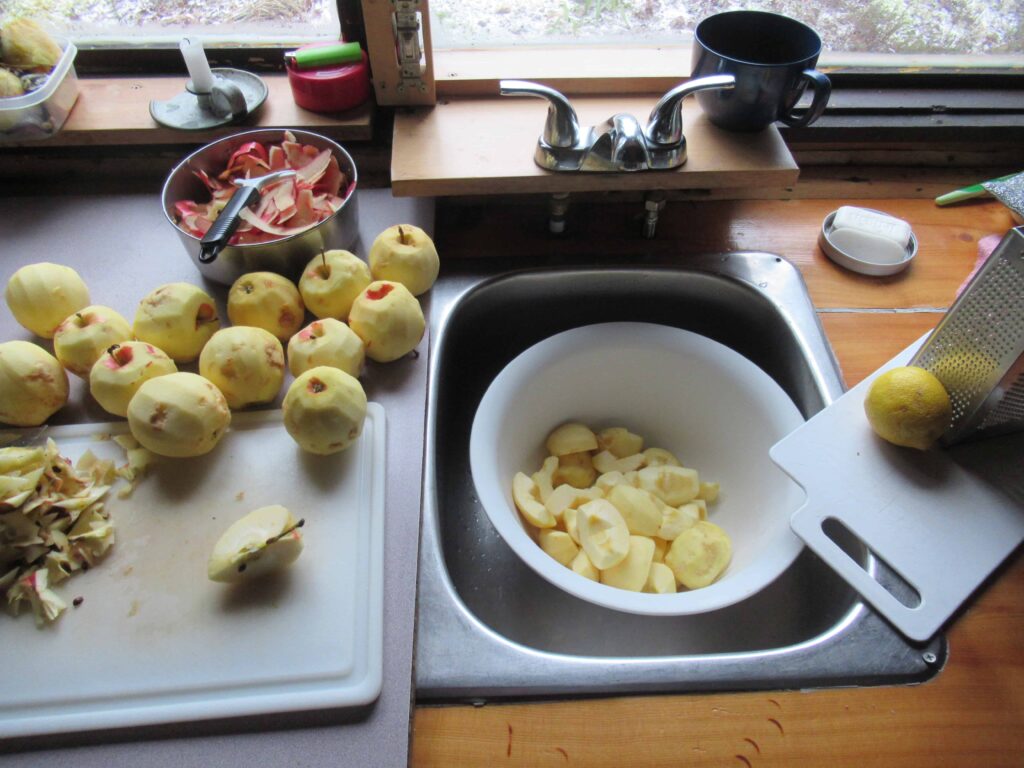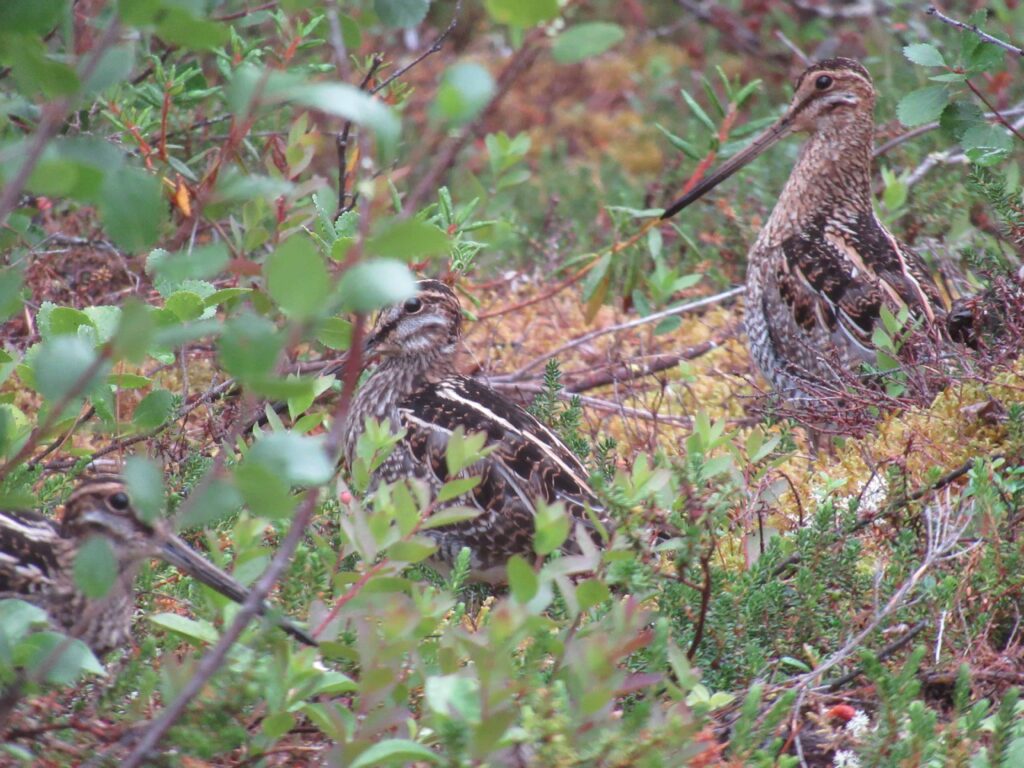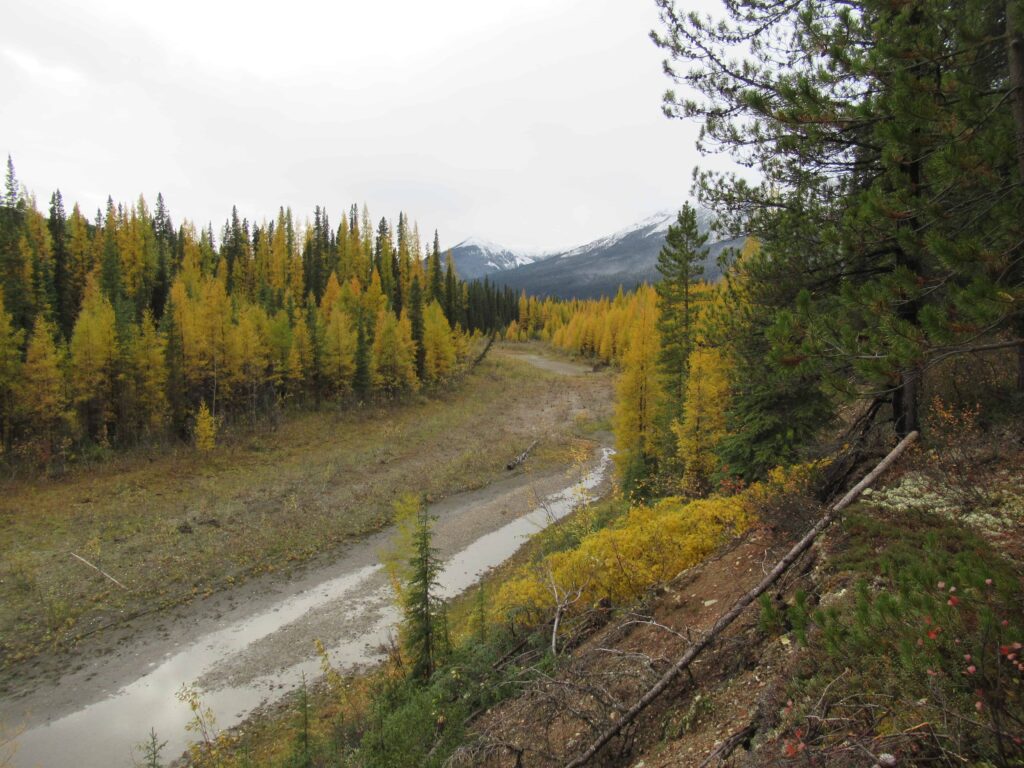


Snow came late this year. It was October 5 by the time we saw white on the ground outside the cabin. We received 17 centimetres of snow, but four days later the rain washed it all away. So, we all received the wake-up call that winter will be coming to the Yukon this year as well. That means we’ll have to bring our camp in order: clean and cover the sawmill, put tools back in their places and pump water before the ice starts growing out from shore. I’m thinking of winter gear: Do my winter boots need repair? And what about my new snowmobiling jacket? (It’s too big, so out comes the sewing machine.) Traps will have to be looked at, as well as marten boxes. After that, Old Man Winter is welcome, since trapping season starts November 1 and it would help a lot if the side channels and creeks will be frozen over by then, with 50 centimetres of snow cover. That’s the perfect scenario—but oftentimes we’ll get snow but no cold temperatures, or it’s the other way around.
Planning for the next winter season
We start planning while still on the line, in April. I do the inventory of all the foods leftover, punch it all into a new column in the existing Excel sheet, and voilà! … we see exactly what we had in September, what is left in April and what we consumed in-between. Right away, a new shopping list will be written. Then, once we drive to Whitehorse, the first time we’re back in civilization, we already start buying dry foods, spare parts, bolts and nails. Then in the summer months we boat up and mill the logs we hauled into camp during the winter. This year, we built us a sauna. Man, we should have had a sauna 20 years ago! Paul heats it up two hours before going in. Then we do a 20-minute sweat with a 20-minute break, three times. This is a dry sauna, as we already have a shower corner inside the cabin.
Changing of the seasons
After a busy and short summer with gardening, hiking, fishing and vacationing, I don’t mind scaling back a bit and taking it easier. As sad as it is to see the leaves gliding to the ground, I enjoy the vista when being able to look far into the bush. We have tamarack trees in our valley and I just found out that these conifer trees shed their needle-shaped leaves and are therefore called “deciduous conifer trees.”
My favourite thing to do in the fall is berry picking. The only ones that did well, though, were the juniper and highbush cranberries; and the few blueberries we had, the mallards ate (it was a lot of fun watching them comb through the bushes and enjoy their very healthy snacks. I’m sure they’ll be back next summer!). A week ago, we were sitting in our highstand and I was wondering, Who besides me and a few other people eat raw highbush cranberries? Well, I didn’t have to wait long for the answer: three female pine grosbeaks showed up and started devouring them. With hardly any berries around, this grizzly, captured by a wildlife camera on October 1, doesn’t look too fat yet and I’m wondering when he’ll be off to hibernate. I’m guessing not before the beginning of December. So, stay vigilant, people.
Once there is a layer of snow on the ground, I can go look for mouse trails: many mice usually means a good marten year. When seeing marten tracks, one can discern by the size if it’s a female or a male. Females are quite a bit smaller. We saw two of last-year’s male moose, the other day, munching on willows. I hope they’ll stay together so that they have a better chance against the wolves. The muskrat is still able to swim the side channel and eat its herbs and grasses on shore. Eventually, the rain comes down, the clouds change their shapes, and their colors range from light grey to light black. Glad to be able to feed the wood stove another piece of firewood.
Migrating birds
When boating up the river in the summer, we enjoy seeing Canada geese, common mergansers, belted kingfishers and some kind of sandpipers breeding along it. At camp, the dark-eyed juncos rear their young on maggots (to be found under the tree bark from when we mill the logs). A family of common snipes hung around, but they’re very shy. If they’re staying put, you won’t see them until you nearly step on them. Once the weather changes, in October, we start seeing sandhill cranes flying over. On October 19, about a total of five big flocks of them flew over (we love their eerie calling). Tundra swans show up during the night, mostly, and stay until they’re rested well enough and have eaten their fill. For the first time this year, we’ve watched, for a day, a flock of Pacific loons. Surf scoter, lesser scaup and Barrow’s goldeneye are the other ones not minding being wet from below and above. The American robin, varied thrushes, the brown-headed cowbird and Bohemian waxwings all head south; eventually the juncos, too. The birds that stay are pine grosbeaks, crossbills and sometimes common redpolls. Of course, there are chickadees and woodpeckers. As for the bats, we built them a real bat house, but it’s obviously not in a spot they treasure. They’d rather get stuck between the poly and boards of the old outhouse! And yes, they leave when we get the first few colder nights.
Food
We always purchase Gala apples, but this year they started getting cracks and getting mealy. What to do? I took about four kilos and prepared them for future baking, putting the bags of apple slices in the freezer. The carrots didn’t even do well in a box, covered in sand, so back out of the dark cellar they came and got canned. Onions and potatoes are doing okay, but never ever try to haul pears into the bush! Alas, nearly daily I am found in the cellar, checking on the produce.
Have a safe and quiet fall and winter, and enjoy some apple pies! Sonja Seeber, Yukon Trapper




